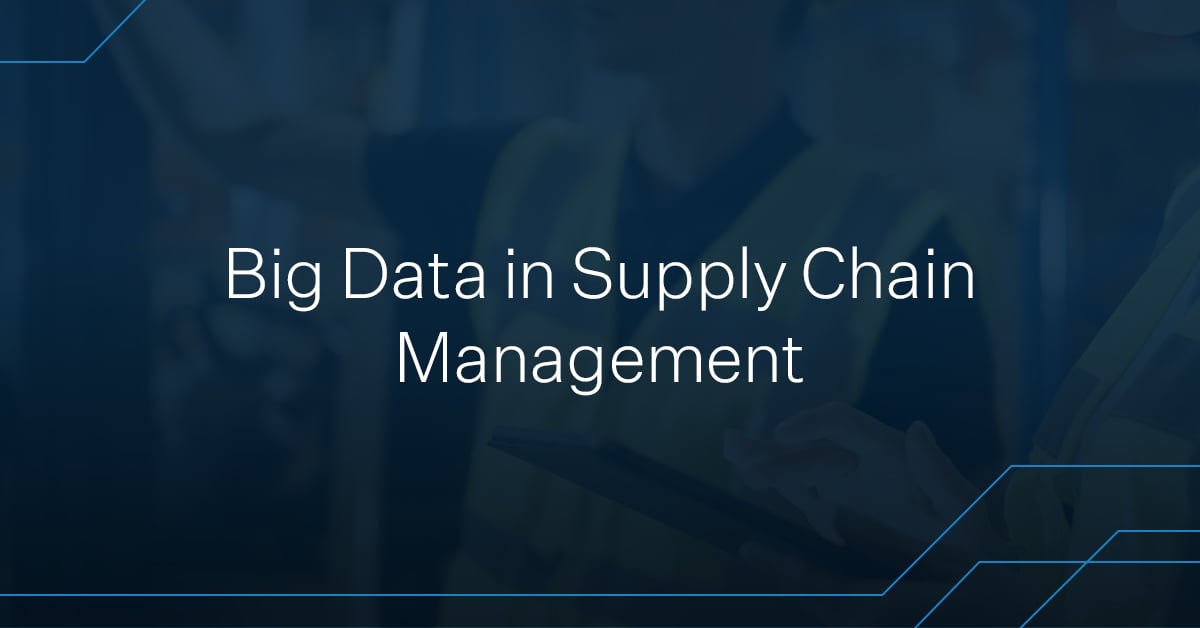Big data is the new “oil” of the supply chain. It’s valuable and powers operations; however, it needs refining to reach its full potential. A hoard of unstructured data is cumbersome, so it’s key that you not only collect big data but have the technology to visualize, organize, strategize, and pull actionable insights from it.
Big data analysis is key to a smooth, productive, and empowered supply chain. Here’s how supply chain managers can harness the power of big data in supply chain management.
Supply Chain Analytics: Why It Matters
Supply chain analytics bring a measure of predictability in this volatile climate. The supply chain has been under tremendous stress since the spring of 2020. Consumer habits across the country changed over one weekend, moving from in-store shopping to e-commerce transactions. The perpetual peak in demand is not showing any signs of slowing down anytime soon. Demand is outpacing the labor supply, which is already depleted. On top of it all, social distancing mandates can affect the amount of work that can be completed each shift.
Visibility into material flow is paramount in reacting to and foreseeing change. A comprehensive data dashboard gives supply chain managers a complete view of minute-by-minute operations. Data can reveal traffic and usage patterns, bottlenecks, and opportunities for continuous improvement. A solid data collection and usage strategy will help managers determine the output they can expect at the end of every day, shift, and minute. Predictability informs better decisions, planning, and responsiveness.
3 Qualifications for Usable Data
Just like oil, big data needs to be refined to make the machine run. Robust amounts of complex data is useless to managers who need to make confident, quick decisions. Analysis paralysis is the state of mind where managers are overwhelmed and buried under piles of data they don’t know what to do with.
To break out from a heap of data, you need a software system that makes it actionable. Usable data must possess the following three qualities:
- Timely. The logistics industry moves at a blistering pace with consumers expecting near-immediate deliveries. To enable a continuous flow of goods, the human workers need to be able to see up-to-the-minute performance data to quickly remedy any issues. Unexpected downtime can translate into significant amounts of lost dollars. Operational efficiency depends on seamless movement, so it’s necessary that data is delivered in real time so workers can take quick action.
- Understandable. Big data is capable of capturing an array of data points; however, you likely won’t need every single number and graph. Make sure to only present and report on the data that will provide valuable insights for specific situations. Eliminate unnecessary information and make it easy to understand.
- Contextual. Customization is key in ensuring data is contextual to the recipient. Data must be delivered to action-takers in their normal flow of work. As important as data and insights are, workers may be reluctant to go out of their way to view them if it’s a hassle. For example, instead of posting a printed daily report at the front of the facility each day, mount tablets with live data that employees can view while working. Employees can quickly and easily see when action is required to meet their goals.
Solutions like Seegrid’s Fleet Geek analytics software, part of the Fleet Central software suite, provide up-to-the-minute relevant data on autonomous mobile robot (AMR) performance. It is a cloud-based fleet analytics software solution that provides on-demand insights that objectively guide productivity decisions. The software provides visibility across the entire facility floor and across your entire enterprise of facilities. Pairing analytics software with an AMR fleet will ensure you’re getting the most out of your automation investment.
Ways to Be Competitive With Supply Chain Analytics
Supply chain analytics boost companies’ competitiveness because it allows them to develop a strategy for current operations, pivot quickly in the face of change, and better forecast based on patterns and trends. An all-encompassing dashboard that provides relevant data and views into up-to-the-minute material flow allows managers to find opportunities for efficiency. Time is money; confident decisions and quick action equal fast boosts to productivity and ultimately revenue. The pandemic showed everyone that monumental change can happen at any time, so it’s paramount to always be prepared with the right tools and technology. A resilient supply chain is key to profitability in the long term.
Successfully analyzing big data allows supply chain facilities to boost capacity, scale, reduce costs, and make informed decisions. A sound data strategy also supports the expansion of innovative automation solutions to drive continuous improvement across your enterprise. Utilize data to illustrate what is working well and what’s possible based on historical and current metrics. Having proven technology to harness the power of data will give you the competitive advantage you need to boost productivity today and into the future.
Product Brochure: Fleet Geek Analytics Software
Download this product brochure to learn how Fleet Geek forges human-machine partnerships and empowers decision making backed by concrete data.







